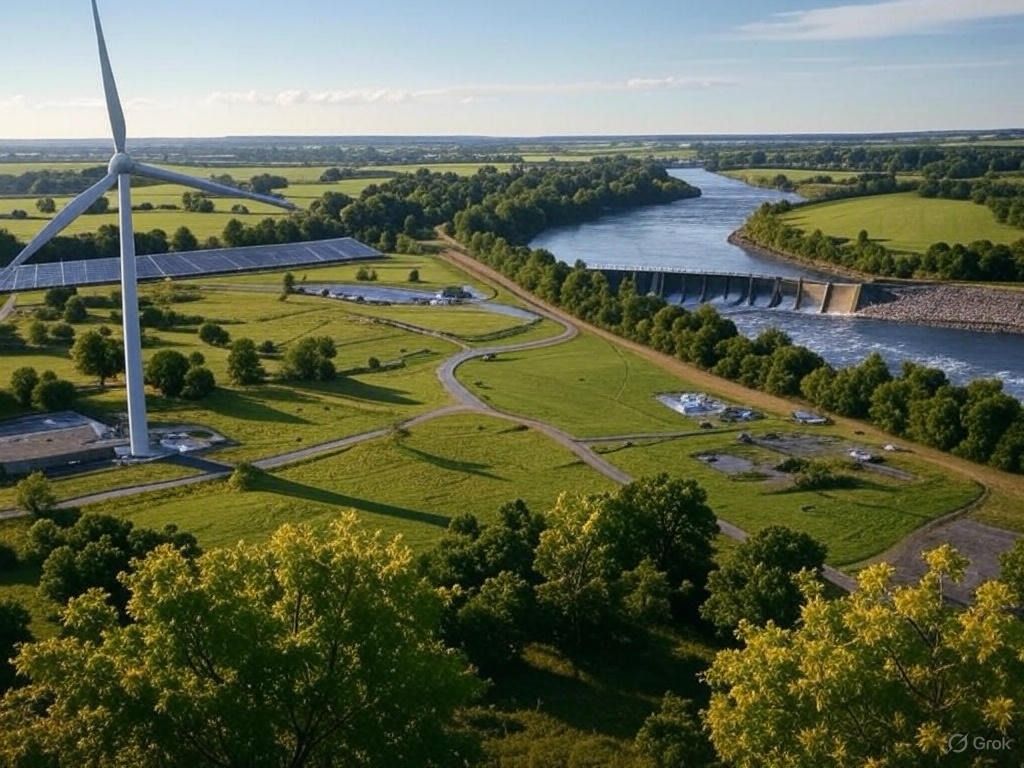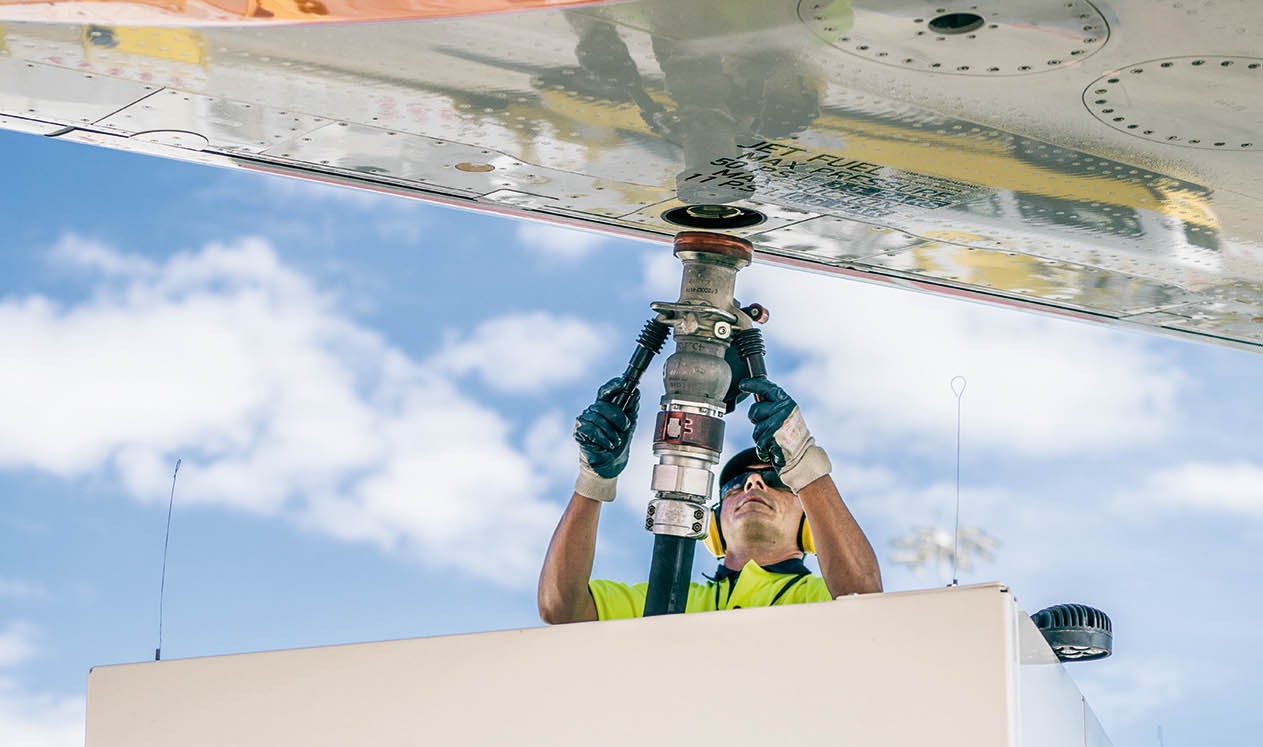Actively facing up to the climate emergency means bringing about a rapid and effective transition to much more sustainable systems, based on using renewable energy sources. But the process of transforming the energy production models that are so necessary and beneficial can also have negative consequences if if is not properly managed.
Collateral damage to employment, wealth and development will increase as the transition process progresses, and it is necessary to face up to this fact as soon as possible. The aim must always be to implement changes that not only take into consideration caring for the environment but also prioritize protecting people, regardless of the country or region in which they live.
What is a fair transition?
The concept of a fair transition was created to encapsulate this new equity-based energy transition model and seek the social, economic, and job-related well-being of everyone everywhere. It basically consists of advancing towards the climate and energy targets set without leaving anyone behind. All countries, communities, and people must be able to have access to the same benefits, mechanisms, and tools for change on equal terms, and a special emphasis must be placed on the importance on mitigating the negative effect that the measures taken are having on people and their quality of life.
The origins of this term date back to the 1970s and are closely linked with the trade union movement and the work of the International Labor Organization (ILO). Originally, it was coined to respond to the new environmental regulations that were being established in the United States and were affecting many jobs. What was demanded at the time was that the changes implemented should not always penalize the workers but that alternatives should be sought, such as giving them certain guarantees. But it was not until the signing of the Paris Agreement in 2015 that the term ‘a fair transition’ was formally recognized. Now, it was linked to fighting climate change, not just purely labor-related aspects, and included social and economic claims.
A decarbonized energy system is a priority for the future of the planet but we cannot ignore the effects that this new model may have on society, employment and the finances of the majority of people.
Why do we need a fair transition?
There are two basic factors that are key to understanding the need to advocate a fair transition today and the major difficulties that exist when upgrading the energy system.
1. Collateral effects
First of all, it is important to understand that what the transition seeks is to move away from a model based on using fossil fuels to a more sustainable one emphasizing renewable energy sources. Having said that, making structural changes to energy models always leads to collateral effects and it is only necessary to glance at the historical precedents, e.g., the closure of coal mines, to see that, in regions where the economy has a direct link to such activities, many challenges arise when their industries go away.
A large number of the economies in the world today are largely dependent on the production, processing, and sale of fossil fuels, such as oil and natural gas. If what we are seeking is for these industries to gradually disappear, all the countries, enterprises, and companies that are highly dependent on these activities will face very serious problems if they do not handle this change of model correctly. Not only will their workload go on falling until production finally disappears but there will also be an imbalance in their economic and social structure and their opportunities for development.
The people who depend directly on these industries will have to face up to consequences like the loss of their jobs, a lowering of their financial capabilities, and a significant reduction in their well-being and quality of life. There can also be consequences for the area in which they live, as the population declines because there are no job opportunities and the cohesion of the entire community crumbles because of job insecurity and inequality. There will also be a great deal of hesitation about applying further changes to bring about the transition because of what it has meant for them already and how it has disrupted their way of life.
2. Economic and social inequality
Another important factor is that not all countries and regions are facing the energy transition with equal opportunities and the same possibilities of success. As tends to happen, the richer countries lead the way and impose the decisions that are most convenient for them, forgetting that there are other states that need support to begin the necessary changes and alleviate the negative consequences that may occur.
In these more powerful economies, the transition can offer numerous benefits from investing in energy diversification and renewables, by creating new green jobs, increasing energy security, eliminating dependence on external sources and, of course, bringing significant environmental benefits to their inhabitants. But to be able to enjoy all these benefits, it is necessary, first of all, to make huge investments in infrastructure, new technologies, and training and development plans, which not all countries can afford due to the high costs. Some inequalities not only occur internationally but also between regions, depending on their economic capacity.
It is also appropriate to keep in mind that poorer countries are less protected from climate change and have less ability to adapt to its adverse effects because of a lack of resources and containment tools. However, these places also contribute a great deal less to pollution levels and greenhouse gas emissions than more developed countries, which makes the situation in which they live even more abusive.
There can also be an imbalance between the people who live in a region because of differing incomes and development opportunities. For example, a user with a higher income level will more easily afford the expense of buying an electric car or changing their home’s energy system to one based on renewable sources such as geothermal energy.
Bearing in mind these essential points, some of the specific measures that can be taken to ensure fair transition processes are:
- Investing in renewable energies and sustainable solutions to reduce greenhouse gas emissions.
- Protecting all affected areas and those dependent on the coal industry so that they can cope with the energy transition.
- Supporting the workers affected by offering them aid and training, with programs that also reach out to their families and communities.
- Identifying the existing gaps, such as gender, age, ethnicity, and disability, and evaluating the impact of the transition on the most vulnerable groups and designing aid for them.
- Remedying environmental damage by strengthening the regulatory requirements and financial guarantees.
- Guaranteeing a transparent and inclusive planning process that permits all social and political players to take part actively in defining the plan is to be followed.
Who are the key players in a fair transition?
Achieving a fair and responsible transition is everyone’s responsibility. On the one hand, it is the task of government initiatives to legislate, regulate, and schedule the measures that are to be taken on the energy transition path, and to ensure that they are complied with and that they achieve the desired results. These measures can be adopted both internationally, in organizations like the UN, and within a European or national framework with initiatives for each country. To ensure that these plans are implemented, normally, some financial instruments are set up with which to make the changes needed. This is the case, for example, of the European Union Fair Transition Fund, which has an overall budget of 17.5 billion euros for the period 2021-2027, for both public and private investments.
Once regulations and legislation for the transition are in place, it is companies that are responsible for making the appropriate changes in their activities and structure. It is a question of implementing training mechanisms for their employees, diversifying the value chain to be more sustainable, creating new green jobs, committing to energy efficiency and renewable sources, etc. In addition, in the case of areas and industries that have an added difficulty and need more supervision, the states can create specific, regulated agreements on how to act.
On the other hand, civil society and local communities are the engine of change and a key part of the entire process. Very often, the regulations start to take shape when society brings to light the existing problems by collecting signatures, organizing protests, etc. Once the regulations have been implemented, we the people have the possibility of taking a proactive attitude to change and supporting all the measures that are taken by demanding amendments or new laws to bring about the most fair and efficient transition possible.
The Action Plan for Spain
Spain is in a good position to become an international benchmark for the implementation of a more sustainable economy, owing to its natural resources and its weather. Although the process that has already started will generate numerous opportunities and benefits, it may also lead to negative impacts on certain activities that continue to be dependent on fossil fuels.
Among the challenges for a fair energy transition, the most important ones faced by Spain are the geographical inequalities found in this country and the strong demographic impact that the new changes may have. Overall, the loss of jobs will not occur in the same places or in the same sectors. The cities and more populated areas lead in the creation of green jobs, while more depopulated areas have more difficulty in revitalizing their industries and diversifying into more sustainable activities, which further exacerbates the depopulation problem.
Even with inequalities between the regions, the good news is that it does not seem that employment levels will worsen during the change process. As can be seen in the forecasts for the fair energy strategy, employment in the electricity and renewables sector is one of the great employment advantages for this country, both in the case of solar and wind power and, in particular, biomass production, which could bring many opportunities to rural areas.
The National Integrated Energy and Climate Plan (initials in Spanish, PNIEC) promises new investments in renewables that will produce a net increase in employment of between 253,000 and 348,000 jobs per year up to 2030.
To further protect more vulnerable people during this fair change process, efforts need to be focused on designing and promoting measures that help to reduce inequality and poverty. In particular, by paying attention to access to resources and basic services, and taking into account the structural problem of energy poverty being experienced by many consumers with less economic capacity. All of these will help reduce inequality and promote more balanced regional development, by favoring the establishment of sustainable industries and new activities in other regions.
In a globalized world where every decision taken can have indirect effects on many lives, it is essential to take the entire world into account and allow everyone to share the benefits of the energy transition. In this way, we will be able to continue making successful progress towards an energy model that is not only more sustainable and decarbonized but also fairer, more equal, and more humanitarian at all levels.




